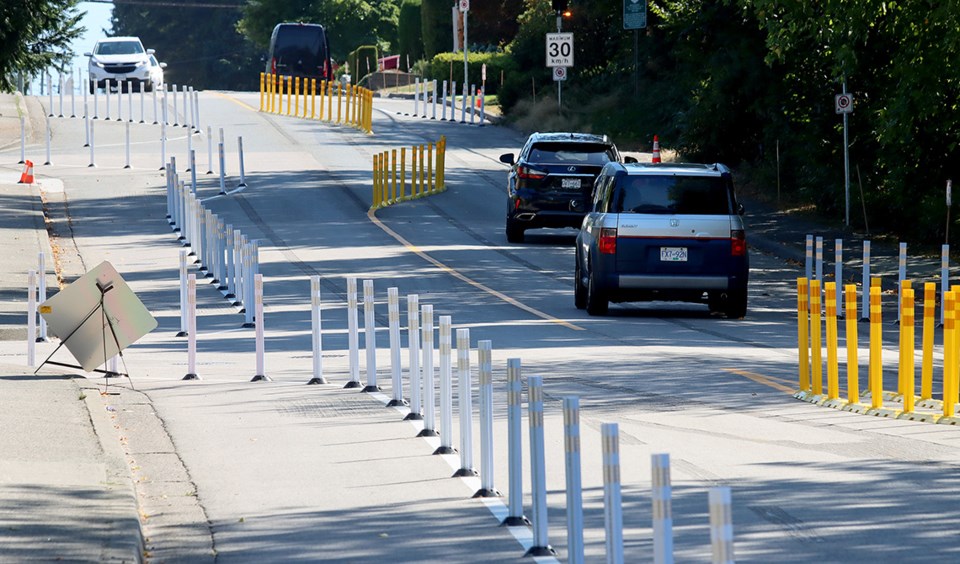It's not exactly the Ascari chicane at the famous Monza racetrack in Italy, but a series of plastic lane delineators recently installed on Port Moody’s Moray Street is the city’s latest attempt to slow traffic heading up and down the thoroughfare’s steep gradient.
Not all motorists are impressed.
Several recently chimed in on social media, claiming the winding diversions might actually make the situation worse.
"Is it meant to slow down traffic, or is to confuse those who already don’t know how to drive?" one person questioned.
"Anyone with a loud, fast car, the city just built a slalom course for them," added another.
But others said the new configuration is welcome.
"About time they did something like this," said one poster. "If you can’t obey the speed signs, then you deserved to be treated like children."
"At least more people will be forced to drive the speed limit," said another.
The delineators to narrow lanes and create medians, as well as new markings on the roadway to configure bulges at intersections, are part of a $70,000 pilot project to slow traffic on the busy connector to Coquitlam used by about 7,000 vehicles a day.
They're also meant to create a safer environment for pedestrians.
The city implemented the project after residents along Moray complained previous efforts to calm traffic had been ineffective, including the elimination of parking on the street’s northbound side as well as a painted bike lane on the southbound side.
They also said the configuration crowded traffic closer to the sidewalks, making pedestrians feel unsafe.
A survey launched by the city last June received about 120 responses, said Port Moody transportation engineer Geoffrey Keyworth. There were also virtual meetings with residents of the neighbourhood, and a postcard campaign.
The updated plan, approved by council earlier this year, creates a buffer to the sidewalks, while the curb bulges at intersections will allow for better visibility up and down the hill by motorists coming off side streets, said Keyworth.
The bike lane has been eliminated.
Keyworth said the city will continue working on identifying alternate routes that will connect with Coquitlam’s plan to direct cyclists a little further east from Moray and Thermal Drive, along Clearview Drive, Park Crescent and Corona Crescent, to eventually reach Como Lake Avenue.
The pilot project will be evaluated in November.
If it becomes permanent, construction of concrete medians, curb extensions and the installation of better lighting is estimated to cost $720,000.



